|
1/21/2018 How to Crush the Columbia Tower Stair Climb - Stairwell Training & Strategies (Part III)Read NowAchieve your fastest stair climb possible with these strategiesIf you successfully worked on the mobility and stability training drills as well as the functional stair drills from the first two blog posts, then you are ready to fine tune your training. It’s time to go in-depth regarding stair climbing strategies and biomechanics! How many stairs to take with each step Ideally, you should be doing two stairs at a time. To assist with carrying momentum, try stepping onto the first stair of each flight and then continue with the two stair strategy thereafter. This will also help you conserve energy because you will not overly stress yourself to “jump” to the second stair after turning at the landing between flights of stairs. Be efficient at the stairwell landings - keep your steps to two or less during the transitions between flights of stairs. How to integrate arms If you have the stairwell to yourself, use both handrails! Just like with walking, your arms should be moving in opposition to your legs - this is critical to help stretch and activate your core and glutes. However, as you round the corner at a landing, try stepping your left foot onto the first stair of the next flight and reaching for the left handrail with your left hand - you can take advantage of centrifugal forces and swing yourself up the stairs of the next flight with your left arm! Just make sure you get a solid grip with your left hand… When you are sharing a stairwell and you are passing a fellow climber or you are getting passed, you should be using one handrail with both arms. Although less ideal, both arms pulling via one railing is still incredibly helpful. As a note, please be considerate of your fellow climbers. If you are being passed, please be sure to step toward the outside of the stairwell to allow the faster climber to pass on the inside. Pre-race warm up The big climb will spike your heart rate throughout the race. As such, you should make sure your heart and legs are prepared before you get to the first stair. Try the moves below to get your heart rate going and legs and arms functionally warmed up. Stairwell drills Although the ideal is to take two stairs at a time, you should practice doing one stair at a time sporadically during your climbs. This is important because there are times when there will be bottlenecks or you will be trying to pass fellow climbers and you will not be able to climb using the “ideal” technique. Additionally, some training in which you take three stairs at a time is a great strategy to functionally improve hip and foot flexibility. Most of your stair training days should include a variety of drills as shown in Part II of this blog post series. However, up to 1x/week or once every other week, you should be doing a “speed day” in which you are specifically climbing the stairs as if you were doing the actual Columbia Tower race. Make sure you train as if there are other racers in the stairwell so that you are not climbing “perfectly” throughout the climb (use the two hands on one handrail strategy intermittently or pretend like you are passing another climber and can only take one stair at a time). Heart rate training Ideally, you should chat with your physical therapist before attempting a stair climb to ensure your heart is up to the task. If you know your cardiovascular system is safe for this strenuous competition, then you should optimally train your heart to prepare for the challenge. Check the numbers. Time how long it takes you to climb 23 flights of stairs, or some other close derivative of 69 flights - this should be calculated based on climbing at a relatively intense, but sustainable pace. Once you are able to estimate what your 69 flight climb time could be, you need to plan some workouts around that duration. For example, let’s say you calculate that it will take you 15 minutes to climb the Columbia Tower. Then you need to do some sort of cardio at least 1-2x/week, at a relatively intense level for 15 minutes. The training should be done in a stairwell or on a staircase at least 1x/week. You may want to add an extra 1-2 minutes to your “relatively intense” cardio workouts to build in a buffer in case your calculations were off or the race simply ends up being harder than expected. Elevator drills If you have the option, use the elevator to go down! Although it is important to learn to control your knees when descending stairs, you can reduce some of the stress associated with stair descents by using the elevator instead. However, given that you do not actually get a rest break during the climb, you should not be resting while waiting for or while riding the elevator to get back to the bottom of your building’s stairwell. When you get to the top of your building’s stairwell, the last thing you should do is stop moving. Keep your heart rate up! To make your training as similar to race day as possible, try doing two-legged or single-legged squats while waiting for the elevator and while in the elevator. And consider adding in heel raises between squats as well as moments of single arm support on the elevator handrail. Although it may feel awkward with other residents around, the benefits of these drills will pay off. As a note, if you are doing speed repeats and require a breather in-between climbs, skip the squats. In this instance, you are doing an anaerobic, fast-twitch based workout and taking a break between climbs will be important. Otherwise, take advantage of these elevator drills to give yourself an extra edge in your training! Encouragement - both for yourself and your fellow climbers Encourage others as you pass them or as you get passed - focusing on other climbers’ success will keep your mind off the muscle fatigue and pain and help keep you charging up the tower! Remember, this competition is for a good cause - please make it as positive and enjoyable as possible for all participants. Biomechanics for a left rotational climb - like the Columbia Tower stairwell Consistently turning to the left at the top of each stairwell and to progress to the first stair of the next flight means you need a lot of hip mobility and strength in certain areas. Although your body needs to use and control all 3-planes of motion at every joint, there are some extreme ranges the body will go through during a stair climb that involves a stairwell with a left rotated climb. Let’s consider the feet and hips together. As a note, each of the biomechanics scenarios discussed in this section have to do with the left rotation required while stepping onto a landing between flights of stairs and then up to the first or second step of the next flight of stairs 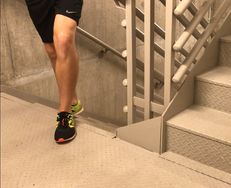 Stepping onto the left foot at a stairwell landing When you step onto your left foot on the landing between flights of stairs and you are already preparing to turn left to go up the next flight, your left foot will turn out relative to your knee - the result is an externally rotated foot which, when coupled with forward momentum of the left knee, will require and should generate a huge amount of subtalar joint eversion and forefoot inversion. -- Food for thought: can your left foot successfully use and control a large amount of pronation? --- The left hip will be externally rotating until your foot hits the ground when it will internally rotate a small amount because of your left foot’s pronation. Your left hip needs to be able to decelerate hip flexion + internal rotation + adduction. If it cannot, it is likely your knee will collapse to the inside at every landing. The result is excessive lateral knee joint compression and medial knee gapping (excessive lateral meniscus pressure, excessive medial collateral stretch, excessive lateral pull of the patella). -- Food for thought: can your left hip successfully use and control flexion + internal rotation + adduction? -- 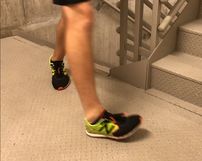 Stepping through the left foot at a stairwell landing The left foot also needs a lot of supination - when your left foot is planted on a landing between flights of stairs and your right foot is swinging up to the next stair, your left foot is internally rotated relative to your knee and your subtalar joint should be inverting while the forefoot everts to help keep your big toe down on the floor so you have a solid point to push from to carry your momentum forward and up. -- Food for thought: can your left foot supinate successfully so you have a solid lever from which to push your body up to the next stair and onto your right foot? -- The left hip will require a huge amount of internal rotation + abduction + extension in order for you to step forward and onto the next stair and onto your right foot. -- Food for thought: does your left hip have the ability to use and control internal rotation + abduction + extension when stepping forward onto your right foot to get up to the next stair? -- 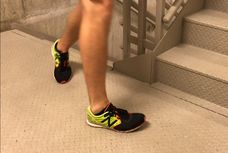 Stepping onto the right foot at a stairwell landing When you first step onto the landing with your right foot, the foot is internally rotated which has a tendency to make it harder to pronate. We need foot pronation to dampen impact forces and to allow the glute muscles to activate. -- Food for thought: can your right foot still pronate when your foot is internally rotated? -- The right hip may or may not experience internal rotation during the loading phase of stepping onto your right foot - this is because of relative rotation. Depending on the rate at which your pelvis rotates left while your femur rotates left will determine if your glutes are going to get stretch at all via internal rotation. However, we do know that your right hip will need a lot of flexion and adduction. -- Food for thought: can your right hip use and control flexion + adduction? -- 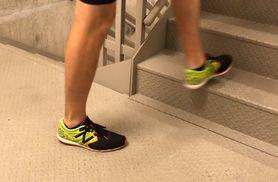 Stepping through the right foot at a stairwell landing As you swing your left foot through while standing on your right leg, your right foot will be externally rotating making it harder for your foot to successfully supinate (your subtalar joint will want to evert rather than invert). As a result, your calf will need to work extremely hard to help control what your heel does in space. -- Food for thought: can your right foot supinate despite your entire body rotating to the left and can you still push off from your big toe successfully? -- Your right hip will be externally rotating, abducting, and extending. If you have tight abductors, a history of a right hip labral tear, or simply a locked up or weak right hip, it will be a challenge to achieve those 3-dimensional mechanics. -- Food for thought: can your right hip use and control external rotation + abduction + extension? -- There is a lot more that should be considered when it comes to the biomechanics of a stair climb, such as: biomechanics of the hips and feet while climbing directly up the stairs (no global left rotation) and biomechanics of the thoracic spine and shoulders while using the railings in a variety of positions (opposite handrails or same handrails or no handrails). My training plan Sunday: alpine and/or nordic ski Monday: run and functional workout Tuesday: rest day Wednesday: stair training day and functional workout Thursday: run and functional workout Friday: rest day Saturday: alpine and/or nordic ski Professional injury and biomechanics assistance If you need a biomechanics analysis or are experiencing pain while climbing stairs, let one of our expert physical therapists help you move and feel better! Call us at (206) 279-2870 or email at hello@forefrontpllc.com. You can also request an appointment online via this link. Dr. Dan Benson, DPT, OCS, FAFS
Forefront Physical Therapy Belltown & South Lake Union 2720 4th Ave Ste 115 Seattle, WA 98121
0 Comments
Make stairs fun and easy with 3-dimensional training!Now, it’s time to play on the stairs! But be careful! After you master your foundational stair exercises from the Part I blog post, you will be ready to slowly start incorporating some of the stair drills included in the videos below. We filmed a functional series of warm ups and various ascent and descent drills to 3-dimensionally mobilize and strengthen your legs. Because walking up stairs creates up to 6x our body weight in contact forces within the knee joint, it is essential that both strength and control are trained as optimally as possible. It is likely that ascending stairs at a faster rate results in even more forces within the knee joint. As such, make sure you vary your stair training so the force application within the knee changes often and so that you can target more muscles in your legs. Additionally, reach out to one of our biomechanics experts to make sure your knee is being properly supported during stair climbing by its most important friends: the foot, hip, and thoracic spine. Next week's final stair climbing post will include stairwell specific drills and strategies to help you achieve your personal best climb time. As always, make sure you chat with your physical therapist before trying any of our drills! If you would like to support my participation and/or my team’s participation in the Big Climb, please visit: http://www.llswa.org/site/TR/Events/BigClimb?px=1693676&pg=personal&fr_id=1580 to donate. Also, if you would like to train with the SGLRG Stair Crushers, feel free to join the group that Mo created on Facebook so that you can stay in the loop with stair workout meetups. Training with this group is a positive, encouraging experience and can be helpful for anyone who wants to change up their fitness routine and develop some healthy leg strength and cardio fitness. Reference: - https://www.ncbi.nlm.nih.gov/pubmed/12127184 Dr. Dan Benson, DPT, OCS, FAFS
Forefront Physical Therapy Belltown & South Lake Union 2720 4th Ave Ste 115 Seattle, WA 98121 1/8/2018 How to Crush the Columbia Tower Stair Climb - Mobility & Stability Training (Part I)Read NowMake stairs easier by developing a functional foundationI cannot believe Mo convinced me, and many other members of the Seattle Green Lake Running Group (SGLRG) Stair Crushers, to sign up for another stair climb at the Columbia Tower. Every year, the Leukemia & Lymphoma Society hosts the Big Climb Seattle at the Columbia Tower. It is an incredible event which raised almost $3 million dollars last year! It is also a brutal event - especially if you choose to time yourself and turn the 1,311 stairs over 69 flights into a race. By the time you reach the top, you can hardly breathe or walk. If you have ever experienced “track hack”, it is not fun and is almost guaranteed to occur to each individual when they reach the top of the climb. But the race is an adrenaline rush. There are few races that can so completely test your limits in such a short period of time while serving as an opportunity to support a wonderful cause - this makes the event hard to pass up. With the climb being less than 3 months away, it is my goal to help my stair climb team and all participants experience more success at the event - this means faster climbing times with less likelihood of injury. As a physical therapist specializing in biomechanics and someone who was fortunate enough to finish in the top 4 of the climb last year, I have a unique ability to offer special insights into stair climb training and racing. Although the SGLRG Stair Crushers group is participating in the Big Climb for altruistic reasons, we would like to do our best and win as a team. As such, the mobility and stability drills offered below are designed with performance in mind. If your goal is to be a top finisher and train safely and effectively, consider trying the exercises in this post. As a note, my next post will offer functional stair ascent and descent drills while the final post will be all about strategy when training specifically in a stairwell and how to prepare for the subtleties of the Big Climb. I hope you enjoy the foundational moves filmed for this blog post series. If you would like to support my participation and/or my team’s participation in the Big Climb, please visit: http://www.llswa.org/site/TR/Events/BigClimb?px=1693676&pg=personal&fr_id=1580 to donate. Also, if you would like to train with the SGLRG Stair Crushers, feel free to join the group that Mo created on Facebook so that you can stay in the loop with stair workout meetups. Training with this group is a positive, encouraging experience and can be helpful for anyone who wants to change up their fitness routine and develop some healthy leg strength and cardio fitness. Dr. Dan Benson, DPT, OCS, FAFS
Forefront Physical Therapy Belltown & South Lake Union 2720 4th Ave Ste 115 Seattle, WA 98121 |
Details
Forefront AuthorsWe love writing about injury prevention and functional exercise. We want everyone to share in our motto: movement for a healthy life! Archives
June 2020
Categories
All
|
Signup To Be At The Forefront Of Injury Recovery & Fitness Tips!
Get out of pain and move better!
Scheduling & Inquiries
hello@forefrontpllc.com
Call or Text: (206) 279-2870
Fax: (206) 279-2872
Mailing Address
Forefront Physical Therapy ● 2212 Queen Anne Ave N #333 ● Seattle, WA 98109
Scheduling & Inquiries
hello@forefrontpllc.com
Call or Text: (206) 279-2870
Fax: (206) 279-2872
Mailing Address
Forefront Physical Therapy ● 2212 Queen Anne Ave N #333 ● Seattle, WA 98109
Billing Questions
cclemmons@omnimbs.com
cclemmons@omnimbs.com
Movement For A Healthy Life
Employment Opportunities
Forefront Physical Therapy operates on an entirely paperless system
Frequently Asked Questions
Employment Opportunities
Forefront Physical Therapy operates on an entirely paperless system
Frequently Asked Questions
© 2023 Forefront Physical Therapy, PLLC

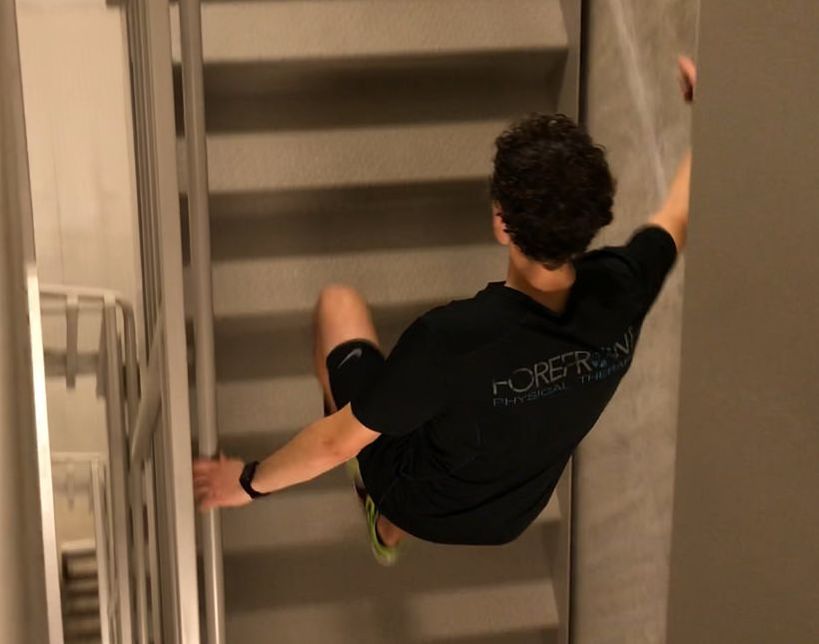
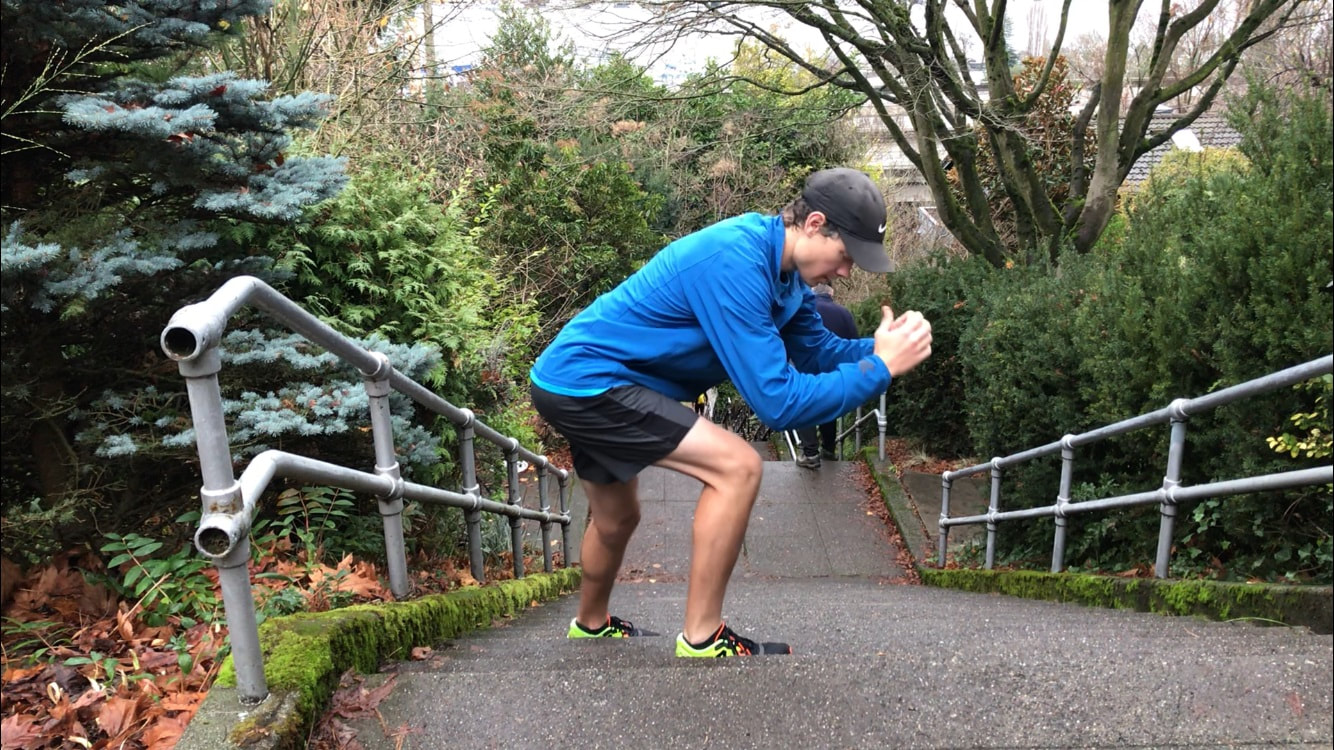
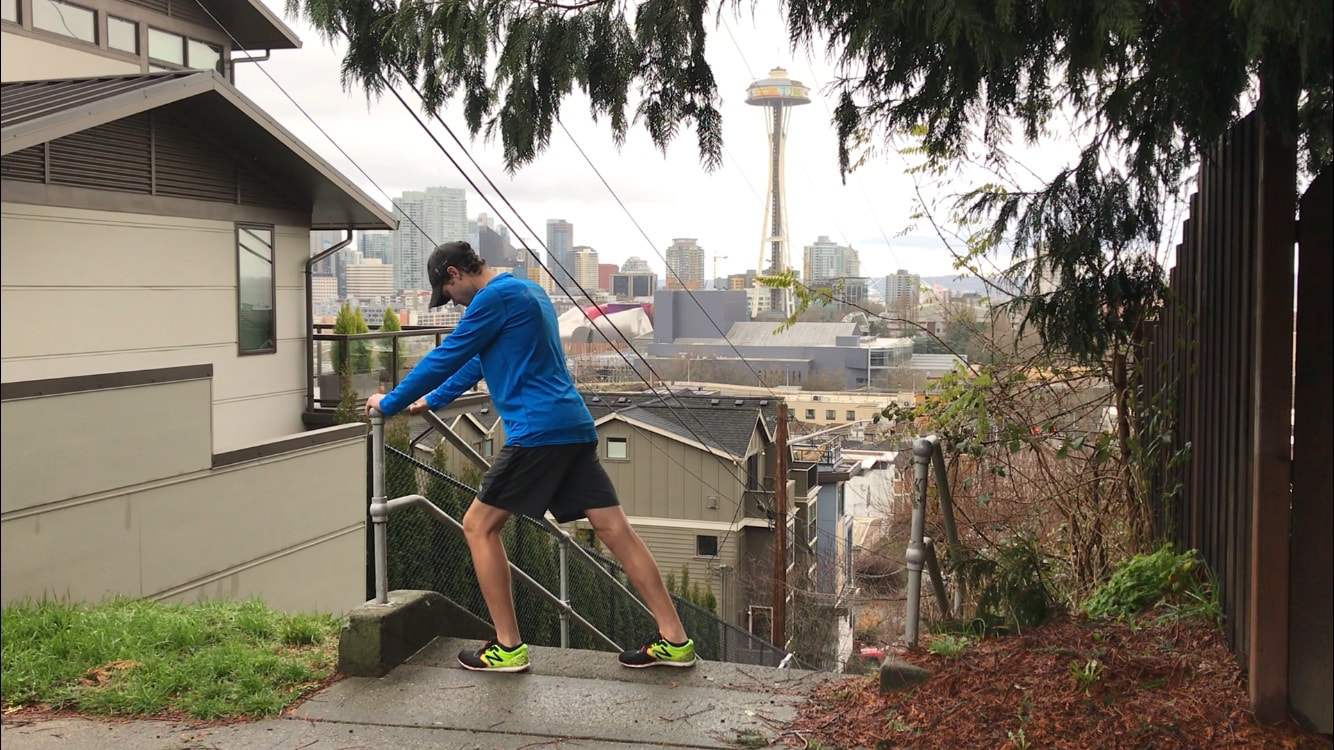
 RSS Feed
RSS Feed
